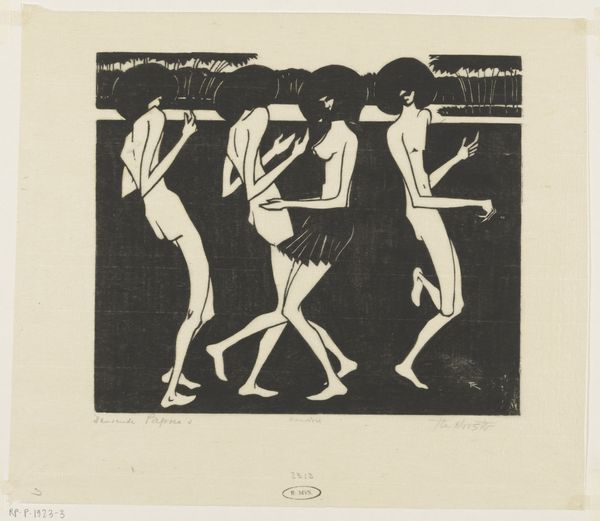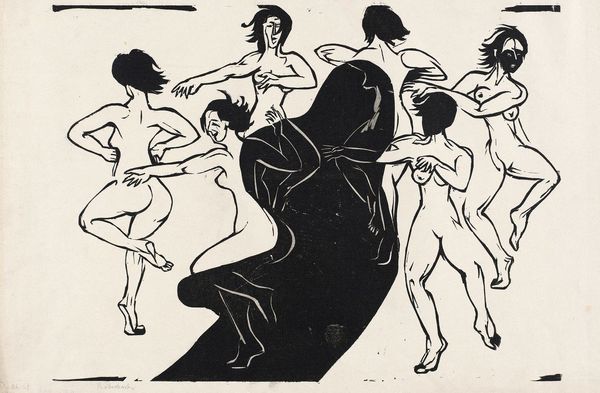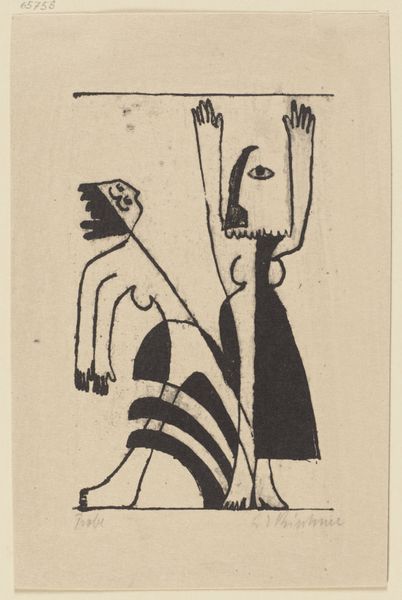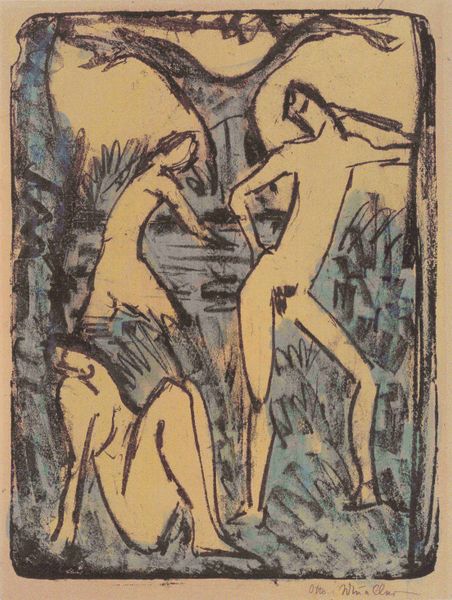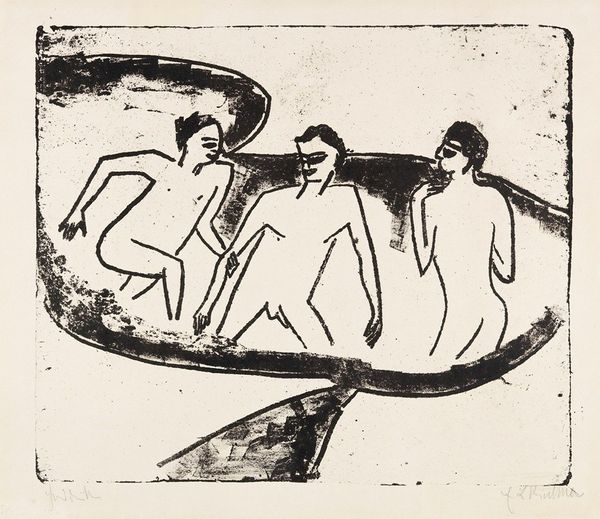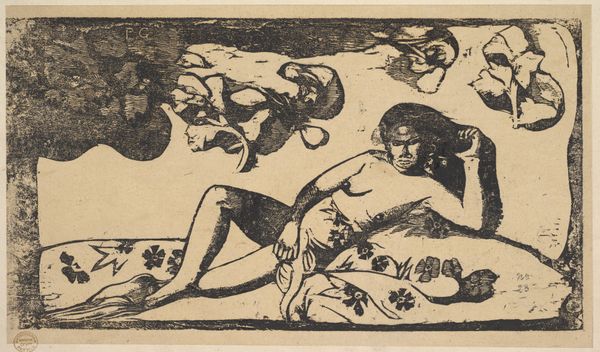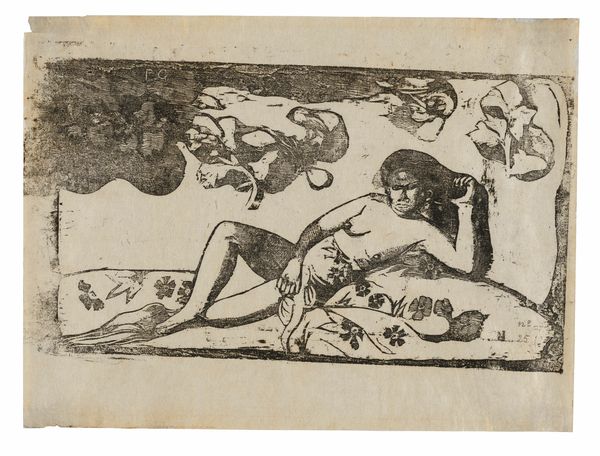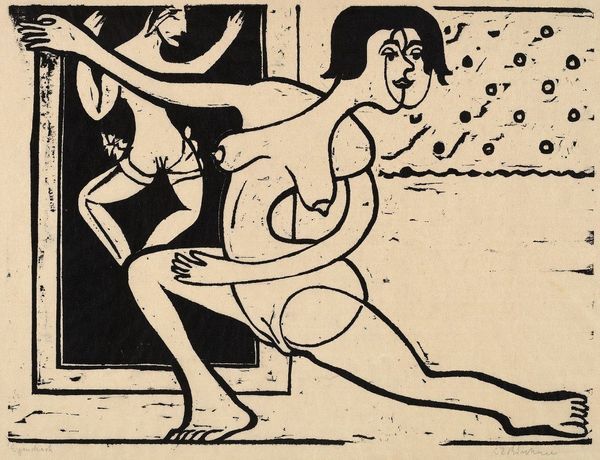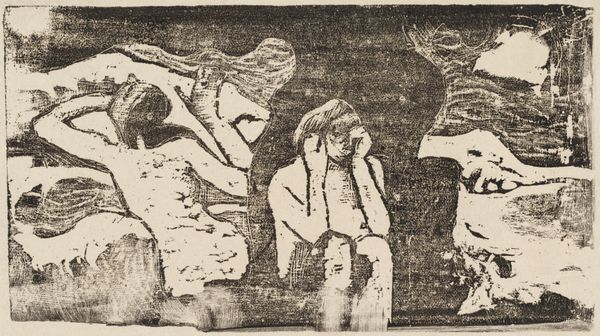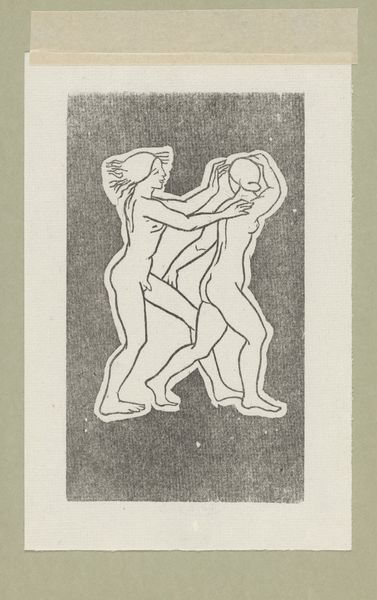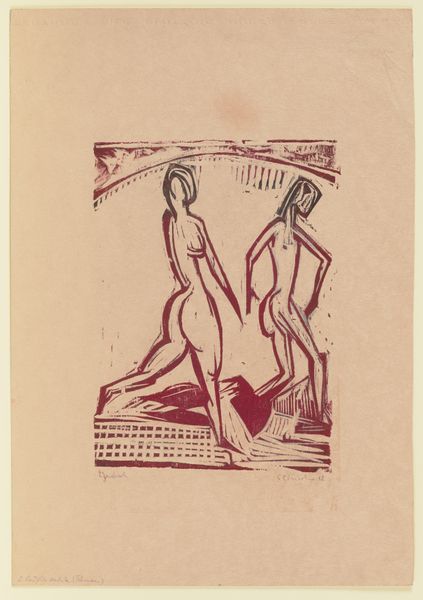
print, woodcut
# print
#
landscape
#
german-expressionism
#
figuration
#
woodcut
Dimensions: image: 22 x 33.2 cm (8 11/16 x 13 1/16 in.) sheet: 34.6 x 42.7 cm (13 5/8 x 16 13/16 in.)
Copyright: National Gallery of Art: CC0 1.0
Editor: Let's discuss Ernst Ludwig Kirchner's woodcut, "Acrobatic Dance," created in 1911. The stark contrast and angular forms are so striking. It feels…restless, almost aggressively dynamic. What social context informed such a bold aesthetic? Curator: Excellent observation. Kirchner was a key figure in German Expressionism, a movement deeply affected by the rapidly changing social and political landscape of early 20th-century Germany. The 'restless' energy you perceive reflects the anxiety and alienation felt by many at the time, intensified by urbanization and industrialization. Consider the Die Brücke group that Kirchner founded. Editor: How does the choice of woodcut as a medium amplify that sense of anxiety? Curator: Woodcut is inherently a crude process. The sharp, unrefined lines suited the Expressionists’ desire to break from traditional artistic conventions and challenge the established bourgeois order. Kirchner deliberately used this 'primitive' technique to express raw emotion and critique what he perceived as a decaying society. Does the presence of performers give a clue about the function of art in society? Editor: That’s fascinating! I see it now; by portraying acrobatic dancers in such a stark manner, he’s perhaps commenting on the role of entertainment as both a reflection of and an escape from societal tensions. The art challenges societal expectations, almost mocking it through abstraction. Curator: Precisely. Kirchner pushes us to see how art operates in and reflects a very specific socio-political climate, questioning power dynamics in society and their influence on artistic creation. Have your impressions shifted now? Editor: Absolutely. I initially saw formal qualities of the artwork, but now it is so much more interesting to understand its relation to societal factors, what informed and motivated its production, and, frankly, its revolutionary nature.
Comments
No comments
Be the first to comment and join the conversation on the ultimate creative platform.
